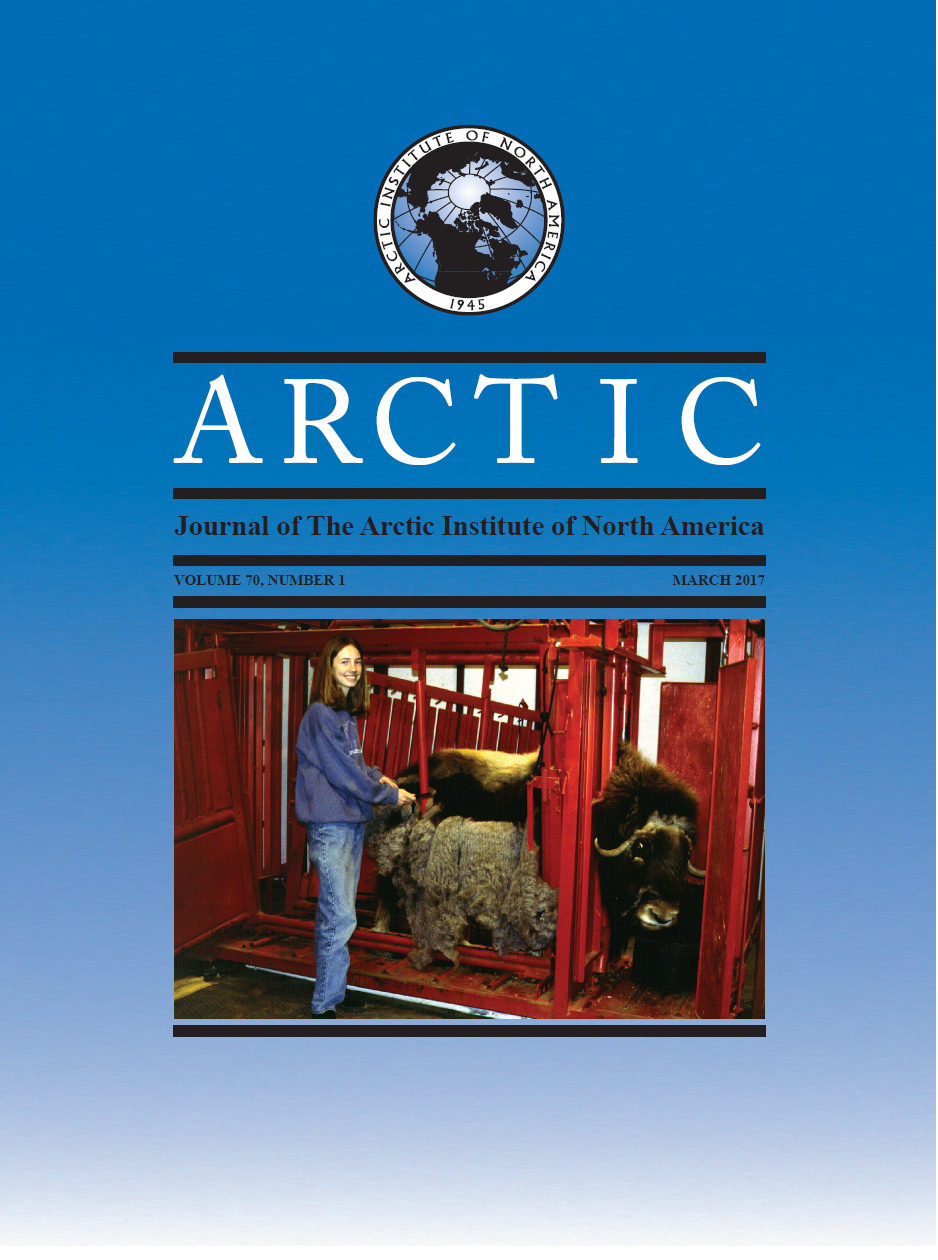Calculating Food Production in the Subsistence Harvest of Birds and Eggs + Supplementary Appendices S1 and S2
DOI:
https://doi.org/10.14430/arctic4630Keywords:
bird, egg, subsistence harvest, subsistence hunt, harvest survey, food production, edible mass, recovery rate, number-to-mass conversion factor, volume-to-number conversion factor, AlaskaAbstract
Subsistence harvest studies use number-to-mass conversion factors (CFn-m) to transform numbers of animals harvested into food production (CFn-m = body mass × recovery rate; where recovery rate is the percentage of the body mass represented by the processed carcass). Also, if egg harvest was reported as volume (e.g., a bucket), volume-to-number conversion factors (CFv-n) are needed to calculate the number of eggs taken. Conversion factors (CF) for subsistence harvest of birds and eggs have been based on unclear assumptions. We calculated a mean recovery rate (65%) by weighing and processing wild birds, compiled data on bird and egg mass, developed an egg CFv-n equation, and presented CF for 88 bird species, 13 subspecies or populations, and 25 species categories likely to be harvested in Alaska. We also made recommendations on how to apply and adjust CF according to study objectives. We recommend that subsistence harvest studies (1) collect egg harvest data as egg numbers (not volume); (2) clearly explain considerations and assumptions used in CF; (3) report recovery rates and mass of birds and eggs; and (4) cite original sources when referring to CF from previous studies. Attention to these points of method will improve the accuracy of food production estimates and the validity of food production comparisons across time and geographic areas.


